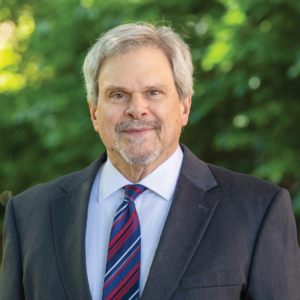NMPF staff actively engaged with dairy farmers and the broader industry in early 2025, informing producers and addressing wide-ranging needs.
NMPF Chief Science Officer Dr. Jamie Jonker’s continued outreach on H5N1 in dairy cattle this year has included panel discussions at the Dairy Farmers of Canada Winter Policy Conference in Ottawa and the 2025 USDA Ag Outlook Forum in Arlington, VA. Also appearing at the forum, in addition to NMPF President and CEO Gregg Doud, was Executive Vice President Jaime Castaneda, who presented in a panel on finding opportunities in changing markets.
Also speaking on H5N1 was Theresa Sweeney-Murphy, senior director of communications and outreach, who participated in Ontario Dairy Days on Feb. 12-13, where she shared with Canadian dairy farmers insights and lessons learned from the U.S. dairy industry’s experience with H5N1.
Senior Director for FARM Animal Care Beverly Hampton Phifer hosted a conversation during FarmFirst’s Annual Conference in Onalaska, WI, on Feb. 7, providing background on the FARM Program, its role within the dairy supply chain and implementation of FARM Animal Care.
Regulatory Affairs Director Miquela Hanselman shared resources to help vets better understand the FARM Program’s mission of continuous improvement at the American Association of Bovine Practitioner’s annual Recent Graduate Conference in Norman, OK, Feb.14 -15.
Chief Sustainability Officer Nicole Ayache attended the Ohio Dairy Quality Conference in Wooster, OH, Feb. 11-12, to provide information about industry-level sustainability initiatives and introduce the updates to FARM Environmental Stewardship.
Will Loux also traveled to Boise, ID, Jan. 23 to speak on the year ahead in dairy to Darigold Young Cooperators (YC) on Jan. 23. Loux also gave a market outlook to new NMPF associate member Idaho Milk Products. Loux spoke on exports in the coming year at the World Ag Expo in Tulare, CA on Feb. 11.
FARM Environmental Stewardship was another topic of discussion at Darigold’s YC meeting. Sage Saffran presented to the group on Jan. 21, highlighting the recent updates to FARM ES and how Version 3 enables on-farm decision making.

 By Paul Bleiberg, Executive Vice President, Government Relations, National Milk Producers Federation
By Paul Bleiberg, Executive Vice President, Government Relations, National Milk Producers Federation The National Milk Producers Federation (NMPF) has worked with federal agencies on cyber issues for more than two decades. While the priorities and likely types of threats have shifted as technology has advanced, food and agriculture entities must take cybersecurity in all its forms seriously.
The National Milk Producers Federation (NMPF) has worked with federal agencies on cyber issues for more than two decades. While the priorities and likely types of threats have shifted as technology has advanced, food and agriculture entities must take cybersecurity in all its forms seriously.
 By contrast, the major hearing participants representing processors opposed most of the hearing’s 21 proposals, including NMPF’s proposals to raise the Class III and Class IV skim milk component composition factors, remove barrel cheese from the protein component price formula, and update the Class I differentials to reflect current costs of supplying milk for fluid processing. Advocacy by proprietaries focused primarily on just two issues: the particularly high profile matters of the make allowances and the Class I mover.
By contrast, the major hearing participants representing processors opposed most of the hearing’s 21 proposals, including NMPF’s proposals to raise the Class III and Class IV skim milk component composition factors, remove barrel cheese from the protein component price formula, and update the Class I differentials to reflect current costs of supplying milk for fluid processing. Advocacy by proprietaries focused primarily on just two issues: the particularly high profile matters of the make allowances and the Class I mover. Download PDF
Download PDF






